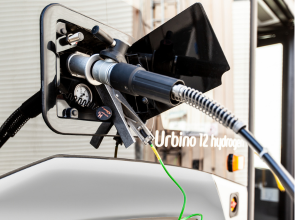SAIC fuel cell vehicles set for demonstration applications
SAIC has accelerated the promotion of innovation and transformation and actively cultivated differentiated competitiveness.

At the National Fuel Cell Vehicle Demonstration Application – Shanghai First Batch of Vehicles Departure Ceremony”, a total of 410 SAIC fuel cell vehicles will be officially put into commercial operation.
The vehicles included SAIC MAXUS MIFA hydrogen fuel cell MPV, SAIC Hongyan hydrogen fuel cell heavy truck and SAIC’s light truck fuel cell cold chain logistics vehicles.
With strong innovative technology strength and rich commercial operation experience, SAIC is accelerating the process of promoting the industrialization of fuel cell vehicles and actively supports Shanghai to become a world-class “hydrogen energy technology innovation highland, industrial development highland, and diversified demonstration application highland”.
As the earliest automobile enterprise in China to carry out research and development of fuel cell technology, SAIC launched the Phoenix No. 1 fuel cell vehicle project in 2001. Over the years, SAIC Motor has continuously invested in and made solid efforts to tackle key problems, and the accumulated R&D expenditure has exceeded several billion yuan. In 2021, JieHydrogen Technology, a subsidiary of SAIC, launched the world’s leading JieHydrogen Qiyuan M4H fuel cell stack. The core technical indicators, such as stack power, stack power density, system power, etc., of the JieHydrogen Kaiyuan series fuel cell systems equipped with M4H stacks are benchmarked against the world’s top level represented by Toyota.
SAIC has launched various products such as sedans, MPVs, light buses, buses, light trucks, and heavy trucks and has achieved commercial operations in more than 10 cities across the country. The total mileage reaches millions of kilometres.
In 2014, the Roewe 750 fuel cell sedan became the first domestic fuel cell passenger car to achieve the announcement. In 2016, the Roewe 950 fuel cell sedan became the first domestic fuel cell sedan to be announced, sold and licensed. In 2017, Datong FCV80 fuel cell light bus became the first fuel cell wide-body light bus to realize commercial operation in China. In 2018, Sunwin fuel cell buses were put into commercial operation on the No. 114 bus route in Jiading, Shanghai. In 2020, SAIC Yuejin fuel cell logistics vehicles and fuel cell special vehicles were announced by the Ministry of Industry and Information Technology, and SAIC MAXUS’s world’s first fuel cell MPV was officially launched.
SAIC has released the first “hydrogen strategy” in China’s auto industry: by 2025, it will launch at least ten fuel cell vehicle products, and SAIC Jet Hydrogen Technology has reached a market value of tens of billions of dollars, established a fuel cell R&D and operation team of more than 1,000 people, and formed a production and sales scale of 10,000-level fuel cell vehicles.
